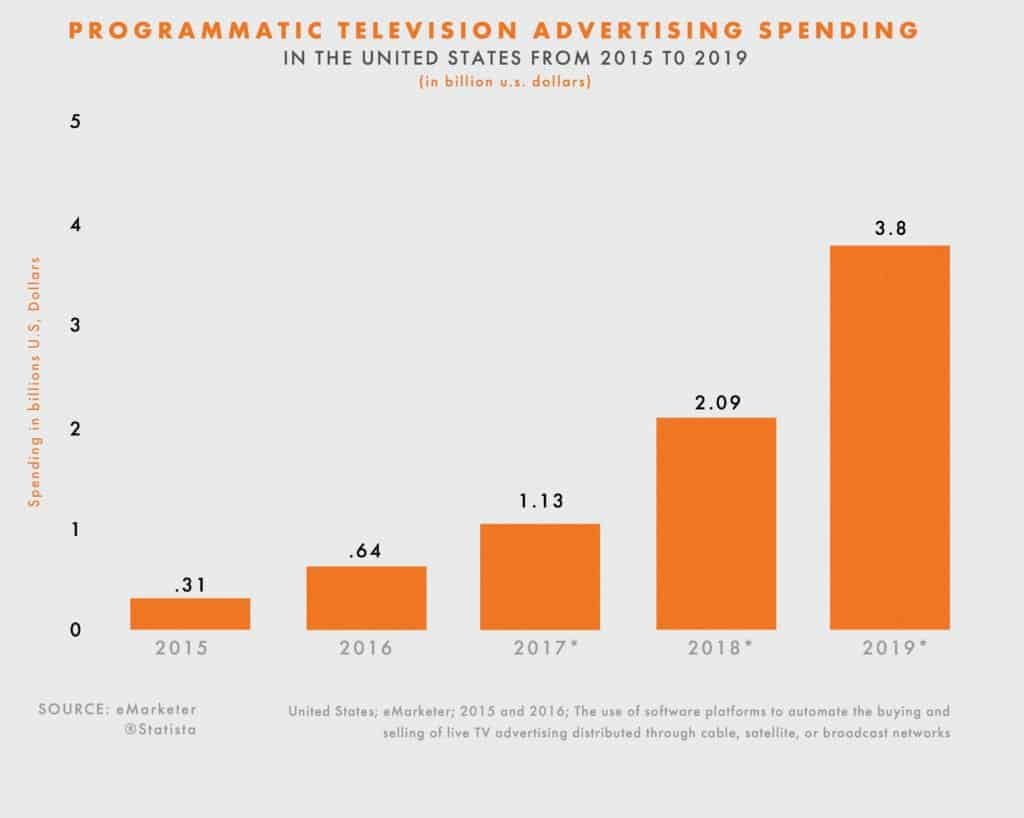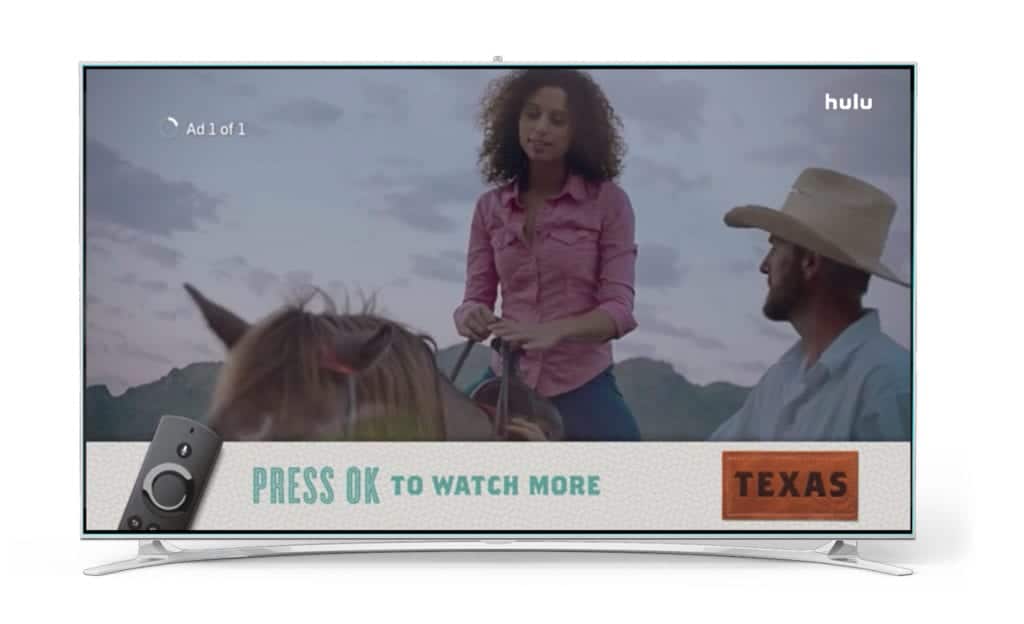
The differences between Live Programmatic TV and Video on Demand and why it matters
Programmatic Television is growing, but what is it and how can marketers buy it?
What is Programmatic TV?
Programmatic TV is “a technology-automated and data-driven method of buying and delivering ads against TV content. This includes digital TV ads served across the web, mobile devices, and connected TVs, as well as linear TV ads served across set-top boxes.” as defined by Google.
How Does Programmatic TV Work?
Programmatic TV is video content viewed on Connected TV’s and ‘over the top’ (OTT) services that stream media directly to the customer via internet connection and do not require a cable connection. Popular services within this category include Netflix, Sling, Hulu, Direct TV Now, Amazon, PlayStation Vue and YouTube. These over the top (OTT) and multi-channel TV services are so popular that they are used by 71% of internet users at least once a month.
Online video distribution efforts have historically utilized a mix of partners to distribute video advertising across websites and apps to intersect with target audiences. Below are a few examples of categories and partners present within many media plans:
1. Publisher direct (CNN, ESPN, Mashable, Buzzfeed)
2. Video ad network (Sharethrough, Tremor, YuMe, etc.)
3. Facebook and Google/YouTube
4. Video DSP (TubeMogul, Videology)
The selection of one or multiple partners in the above list would provide an advertiser with significant reach opportunity against premium inventory and with granular targeting and measurement. The list of options, however, is being continually condensed due to technology advancements as well as mergers and acquisitions. Over the past few years, the popularity of options 1 and 2 have shifted towards 3 and 4, in favor of transparency (ad delivery and pricing), data targeting availability and increased control.
Programmatic TV Media Buys
Make space for #5, Programmatic Television. Programmatic TV is a natural growth opportunity for online advertisers but is a seismic shift for traditional TV buyers and sellers. Programmatic TV offers capabilities that digital media buyers are highly familiar with, but are are somewhat unconventional for most traditional TV buys:
- Audience Targeting. Purchase, affinity and interest-based targeting that drive online advertising efficiencies are now available through Programmatic TV (not traditional linear).
- Automation. Gone are the days of manual negotiation, up-front buys or faxed insertion orders
- Consolidation. Reduction in required partners for planning, buying and measurement.
- Real-Time Optimization. Do males dramatically outperform females after just 2 weeks of delivery in a 10-week campaign? Immediately shift funds and targeting instead of waiting until post-campaign results.
While Programmatic TV is not fully mature, advertiser adoption is growing rapidly. eMarketer estimated a nearly 2X growth in US advertiser spending from 2018 to 2019.

It is also important to note that Programmatic TV is not a synonym for ‘Live TV’ ads. In fact, most Programmatic TV inventory is Video on Demand vs. Live TV. Video on Demand represents most of the current activity and ad opportunity vs. ~2-minutes/hour for Live Programmatic TV. Video on Demand inventory consists of serving video content after the original air date and time such as with programming that may appear on Amazon after its original airdate.

Is Programmatic Television right for my marketing strategy?
If you are actively buying traditional TV through manual insertion orders, up-front buys and relying solely on demo-based targeting, Programmatic TV buying offers a more efficient and potentially effective solution. Partner offerings can be confusing with varying terms, frequent mergers and acquisitions as well as new emerging self-serve systems. Don’t let these details result in continued inefficient advertising spend on traditional TV. There is a better way and Beeby Clark + Meyler can assist in taking advantage of the opportunity.
We would love to hear from you on your experiences with programmatic TV. Please comment below.
Back to Posts
